About 21 Km North of Kampala along the Gayaza-Zirobwe road, there’s Makerere University Agricultural Research Institute Kabanyolo.
As you approach this popular institute from Kampala, your eyes are welcomed by a poorly kept coffee garden on the right hand side.
In fact, if the Coffee Bill is passed in its current form, it would first catch Kabanyolo Institute officials, leading them either to prison or pay heavy fines for neglecting this coffee garden.
This coffee garden simply gives an impression that this area is perhaps not suitable for coffee farming.
However, this isn’t true because about 500 meters away from the Institute on the left hand side, there’s another coffee farm that makes you imagine that this area has the best soils for coffee.
As I visited this coffee farm together with two friends on Thursday June 02, 2020, I was struck by the closeness of coffee trees but also how green they were considering the recent dry spell.
This coffee farm is a complete opposite of the Kabanyolo demo farm.

As we admiringly look at the coffee farm, Jude Tadeo Ssemakula, the brain behind the farm, who had given us an appointment at 11am, welcomes us.
He quickly apologizes for delaying to join us, revealing that they were taking a group of farmers on a paid-up farm tour (he charges Shs20,000 per head for a guided farm tour).
Asked about his background, Ssemakula, 43, reveals that he is an ex-seminarian with degrees in Philosophical Studies from Jinja Philosophy Centre and Theology attained from a Brazilian based University.
His dream was to become a Catholic Missionary Priest but it didn’t materialize.
While in Brazil, Ssemakula says he did his apostolate among farmers in rural areas. He adds that he found them to be serious about what they were doing and got inspired.
ALSO READ:
How To Earn Over Shs23m From An Acre Of Coffee Annually
Lessons For Farmers From Africa’s Largest Coffee Plantation
When he returned back to Uganda in 2010, he had already made up his mind that he was going to venture into farming as a business.
In 2011 together with his two brothers, Ssemakula started a piggery project and by 2014, the pigs had grown in number to over 200.
“Sadly, swine fever struck and swept (killed) all of them. We lost about Shs40m,” Ssemakula reveals.
This huge set back didn’t break his passion for agribusiness. Earlier on, he had heard about coffee farming as a good business on a certain radio station.
“I heard that our coffee is highly priced on the international market; It is used to blend other coffees,” he says, adding that he went on to do more research about coffee and concluded that it was worth venturing into.
“I realized that Uganda has favourable weather conditions that can allow us to have two coffee seasons unlike Brazil where they have one,” Ssemakula says.
Armed with his knowledge, Ssemakula convinced his brothers to jointly start coffee farming.
In 2014, they planted 9 acres of Clonal Robusta Coffee (Ordinary/first line) in Luweero district using the traditional spacing of 3 meters by 3 meters.
With this spacing, you expect a maximum of 450 plants in an acre. This means that they had a maximum of 4,050 coffee trees in the nine acres.
He reveals that as the farm started giving them some money, they were attacked by the devastating coffee twig borer.
“The good thing is that we learnt how to manage it; removing affected coffee branches and burning them as well as spraying it with pesticides especially in the rainy season,” Ssemakula says.
Modern Spacing
He reveals that while listening to a certain radio station in early 2018, he heard Dr. Joseph Nkandu, the Executive Director of Center For Agribusiness & Farmer Entrepreneur Enhancement (NUCAFE) and a top commercial coffee farmer promoting the 1 meter by 3 meters spacing method which is popularly known as the Brazilian Style of spacing.
With the zeal to learn, Ssemakula and his brothers in March 2018 paid a visit to Nkandu at his one-acre demonstration garden in Bunjakko Island, Buwama Sub-county, Mpigi District.
“It was a fascinating experience,” he says, adding: “We came back revitalized and eager to practice what we had seen and learnt.”

He adds that in June the same year, they started preparing the field so that they could plant in August.
They started digging holes using spacing of one meter from one hole to another (from one coffee plant to another) and three meters between rows.
“Farming is science not guess work. Therefore, measurements must be correct,” he says.
At this farm in Kabanyolo, they have slightly over three acres accommodating 4,300 trees which is equivalent to about 10 acres of the traditional method of spacing (3m*3m).
The coffee that was planted on 23rd August 2018 is now about to make two years but it’s already flowering and beginning to pay back.
“We are already having our first harvest though not major after one and half years. You can see how big the beans are,” he says, pointing at the ripe berries ready to be picked.
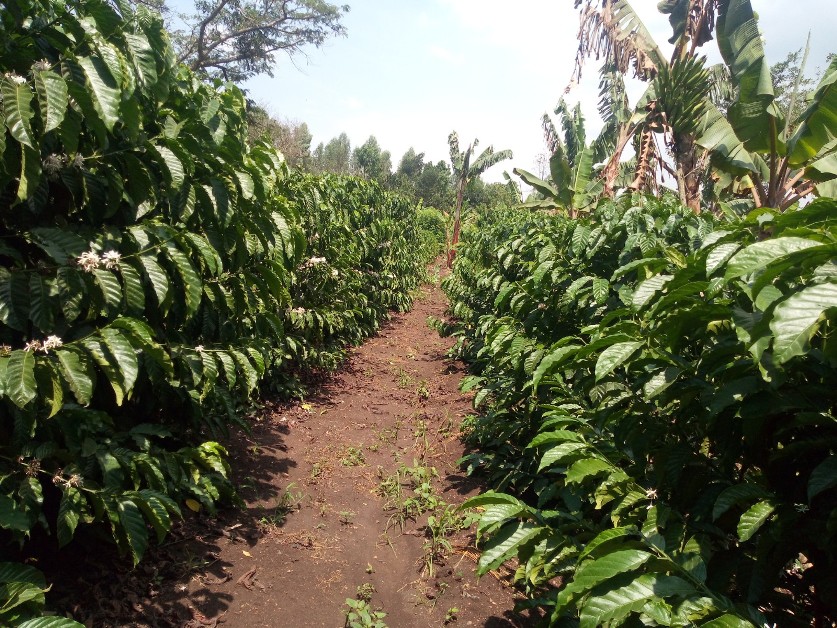
Asked about his projected output, Ssemakula revealed that their target is to get at least 15kgs of dry unhulled coffee berries (Kiboko) per season or 6-7 kgs of Fair Average Quality (FAQ) aka Kase from a tree.
He says if they get 6kgs of FAQ per tree, this will translate into 25,800kgs from the 4,300 trees.
If a kilogram is sold at an average price of Shs4,000, the three brothers will be able to pocket Shs103.2m as gross profit in just a single season.
Given the fact that, they are irrigating, earnings will increase as they will be harvesting throughout the year.
Viability of 1m by 3m spacing
Ssemakula says the Brazilian way of spacing is worth it and any commercial farmer should try it out.
For people with limited land but with passion for coffee, this method is the most ideal because one can have 1,300 trees in an acre equivalent to three acres of traditional spacing (3m*3m).
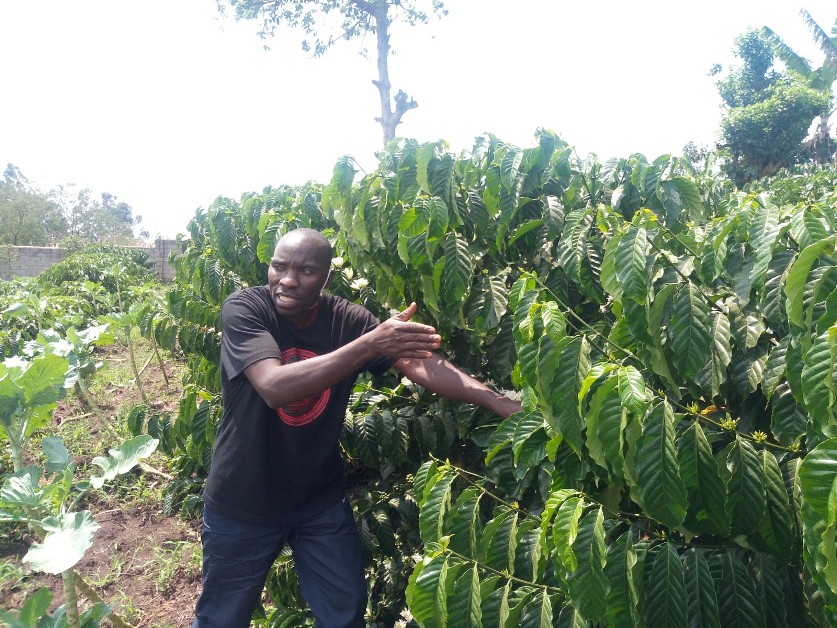
However, Ssemakula warns that “with this Brazilian style, without adequate manure and heavy supply of water, you’re wasting time.”
He adds that with the generally favourable weather conditions Uganda enjoys, it is possible to succeed with this method because one will be required to irrigate only when the dry spell strikes.
“The problem with many Ugandan farmers, they don’t take farming as a business and job. They want to live a comfortable life. In Brazil, there are areas with extreme weather conditions but you see farmers hustling and producing all sorts of fruits,” he says.
Integrated Farming Way To Go
Ssemakula says it is important to use both organic and inorganic fertilizers but at the moment they are still using composite manure which they get from their three cows.
“We don’t buy manure. We instead invest in our cows under zero grazing,” he says, adding: “We give each tree basin of manure per season. We use composite manure because it is less costly and available. We shall use artificial fertilizers when there is need.”
He adds that the lactating cows not only give them milk, but also some daily income because they sell the extra one.
Currently, there’s one lactating cow that gives them nine litres of milk every day.
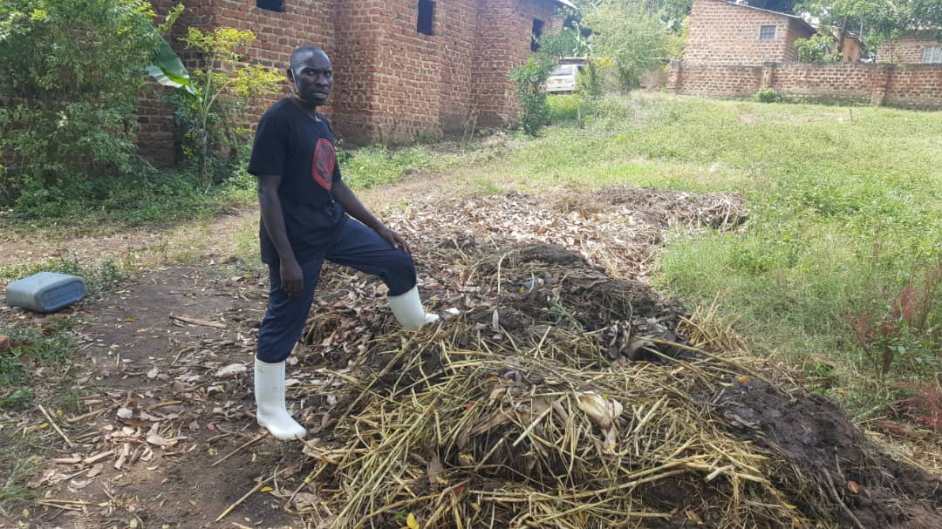
During the dry spell, Ssemakula says, they irrigate their coffee because they are near a permanent water stream.
“We have a strong water pump which helps to push water to the whole garden,” he says, adding that it is tedious but worth it.
“We are planning to put up a pond of one million litres. We are working closely with NUCAFE to install drip irrigation,” Ssemakula, whose passion for coffee grows every day, says.
They have also intercropped their coffee with bananas (matooke) which not only provides them with money, but also shade to the coffee.
Apart from matooke, Ssemakula’s plantation doesn’t have shade trees. Asked why, he says they are not necessary because he will be irrigating but most importantly they are a source of twig borers.
His coffee farm is also not mulched. Asked why, he reveals that mulching is good but due to fear of arson by ill-intentioned people, he is better off not mulching it.
“We try to keep our farm weed-free,” he says, adding: “The coffee canopy also keeps the weeds suppressed.”
All he has done is to put as many trenches as possible to control soil erosion and help in water retention.
“We also use these trenches for manure application,” he says.
Ssemakula also plants Sukuma Witch between the rows in the coffee garden especially the young coffee. This, he says, gives them a daily income of about Shs20,000.
Asked how much they have so far invested in this 3-acre farm, Ssemakula says it is in the region of Shs7m. He says he got a loan of Shs4m from CBS PEWSOSA to kick start this project.
“I have used money from Sukuma Witch to pay back the loan,” he says.
Managing the plantation
Unlike many tele-farmers, Ssemakula and his brothers do most of the work on the farm. Asked whether, they also have three or four branches on a single plant under this spacing method, Ssemakula answered in affirmative.
However, they don’t train/bend the coffee to stimulate more branches.
“Training is expensive and time wasting,” he says, adding: “We only stump the coffee after seven or eight months of planting. After stumping (at onset of rains), many branches pop up and we only leave three good ones.”
The coffee branches grow towards the rows and according to my observation, the trees looked healthy and aren’t competing for space.
He also recommends that after three weeks of planting, one should apply Single superphosphate (SSP) fertilizer or poultry litter to boost growth.
Future outlook
“Our target is to have 50,000 coffee trees by 2025,” he says, adding that they are going to renovate the coffee farm in Luweero so that it also becomes more productive.
He also plans to venture into apiary/bee keeping on the sides of the plantation. The bees will benefit from coffee flowers but also in pollination.
“With coffee farming, I can control my destiny,” he says, adding: “We have a saying here that ‘harvest money everyday’ and we live to see it and tell it.”
Advice to beginners
He advises new farmers who want to venture into coffee farming business to do a lot of research and visit as many farms as possible as they pick key lessons.
About Uganda Coffee
Coffee is the world’s most traded item after oil. Currently, Uganda produces about 4.5 million 60-kilogramme-bags of coffee annually while Brazil, which leads the world, produces between 55 and 60 sixty-kilogramme-bags annually.
Uganda is the 2nd largest coffee producer in Africa after Ethiopia and the leading coffee exporter on the continent.
The government, through Uganda Coffee Development Authority (UCDA) plans to produce 20m 60-kg bags annually by 2025.
With innovations like 1m*3m spacing which maximizes land use and production, irrigation, application of fertilizers and improvement in quality, Uganda will no doubt overtake Ethiopia and compete with global giants in a few years to come.
The author is a farming journalist. For quality Clonal Coffee Planting materials and consultancy, contact me via 0775170346/staddewo@gmail.com




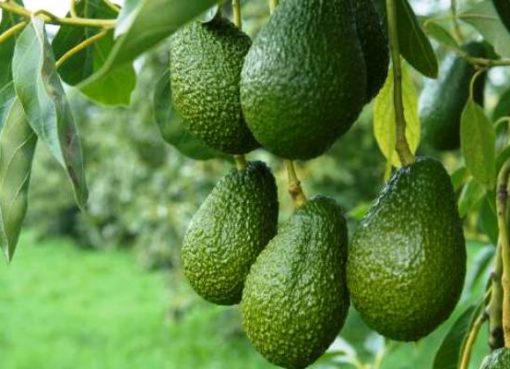
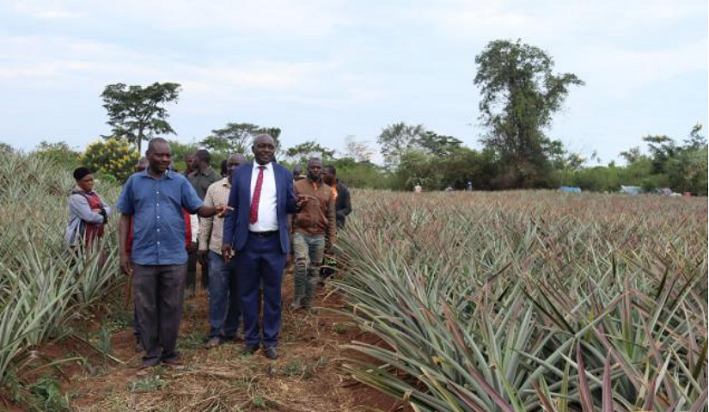

Am pleased about the post. I have really learnt much about coffee growing and am a passionate person about this.
Could you really please guide us or deliver a session about the entire process or organize a (musomo) about coffee programs many people lack knowledge in this field yets it’s our export backbone.
Inspiring
Great to have such good ideas
I was stuck in Sembabule yet my dream is to become one of the leading coffee farmers in the region, now I’ve the best way to go. Thanks for sharing knowledge with the coffee lovers.
Thank you for the info Ssebo. Great stuff. I have about 10 acres of land and I am going to grow coffee this season (in September) but I can’t use irrigation because water is very far away from where my farm is. Please advise on the spacing.
Thanks alot for the story and inspiration. It has touched me since am dreaming of growing coffee one day wen I get my own land. May the Almighty bless your work.
More knowledge and skills please in coffee farming thanks
Impressive ideas on coffee growing
Am very pleased with all the publications you have made. It has helped in boosting our minds about coffee growing and seeing it beneficial as well as improving the country’s economy. I’ve become ambitious to grow coffee but still need to visit Nkandu’s demo farm. Am 22 years and I own 2acres of land and really want to improve them through coffee growing. Need some guidance before I start like what type of coffee should be grown?
Nice write up. Inspiring. The truth is that you need to be on the farm; not phone.
Do you know any whatsapp forum for coffee? Please share contact
Thank for the important information to us young farmers.
Good work keep on
Thanks for the advice